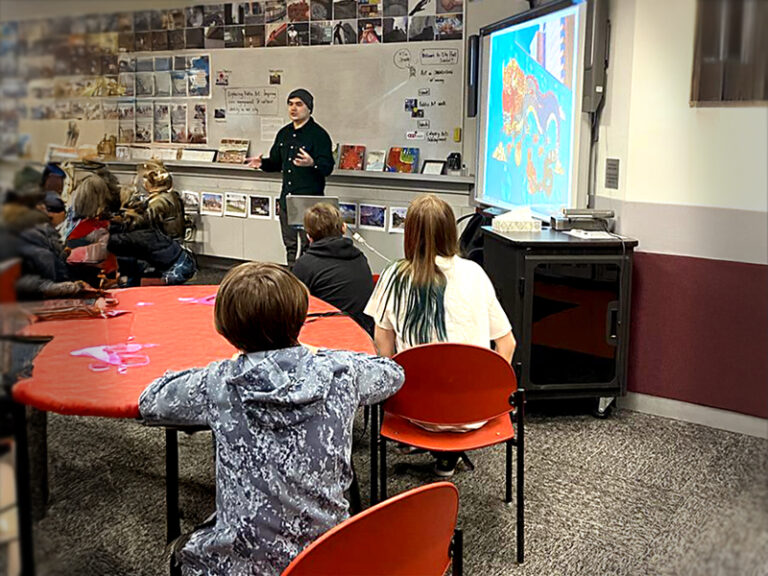Public Art School Programs
Introduce your students to the beauty and power of public art through classroom presentations
Public art is one of the most approachable forms of art. It exists in common space, is available to everyone and is free to access. It makes our city a vibrant and interesting place to live. It generates conversation, creates points of interest and connects us to this place and to each other.
Each classroom presentation offers students insights into public art as a form of community-building, cultural expression and community-focused placemaking.
How does it work?
After meeting with the teacher and learning about the curriculum connection they would like us to make, we provide a description and outline of a tailor-made session for their students. At this time, we offer presentations for students in Grades 3 through 12.
Our classroom presentation starts with a short introduction to the public art program, the work we do and the function of public art and artists. Then, using the curriculum topic, we showcase artworks and artistic practices that highlight key ideas and build on them to offer different points of view and new ways of understanding. If time allows, we can include a short, hands-on project that relates to the main theme of the presentation, offers insight into an artistic process or teaches an artistic technique.
Curriculum connections
We are happy to work with any curriculum topic. Public art has many facets that connect to a variety of everyday and extraordinary ideas. Here are some examples of past presentations:
Fine Arts: Using personal identity to create a representation of community.
Students were given a puzzle-piece-shaped canvas to create a self-portrait representing their personal identity and connection to community. The puzzle pieces together created a large mural, showing how everyone is an important part of the community as a whole.
Social Studies: Encouraging civic engagement and understanding.
Students learned how artists work with communities, city departments and local experts to use public art to resolve social and environmental issues. The hands-on component asked students to create a mural based on their ideas of a brighter future for Calgarians.
Sciences: Public art conservation techniques using redox chemistry.
Students learned how public art conservators utilize oxidation and reduction chemistry to clean and preserve public art pieces, enhancing students’ understanding of molecular changes and showing how chemistry is utilized in the real world.
We are happy to provide additional readings or materials for teachers to continue the discussion with their students. We can also provide a teacher-led classroom project that can be completed as a follow-up lesson.
Requirements from school and teachers
There is no cost to the school for a presentation. If there is a hands-on element, supplies are provided by Calgary Arts Development.
Teachers must be available (by phone, virtually or in-person) for a short discussion about the curriculum connection and logistical details. We require at least four (4) weeks to develop each classroom presentation.
Minimum classroom presentation time is 40 minutes, and maximum presentation time with a hands-on project is two hours. We are happy to work with teachers to plan presentations over two days if required to accommodate classroom schedules.
Request information or book a session
Reach out to the Calgary Arts Development public art team at publicart@calgaryartsdevelopment.com

